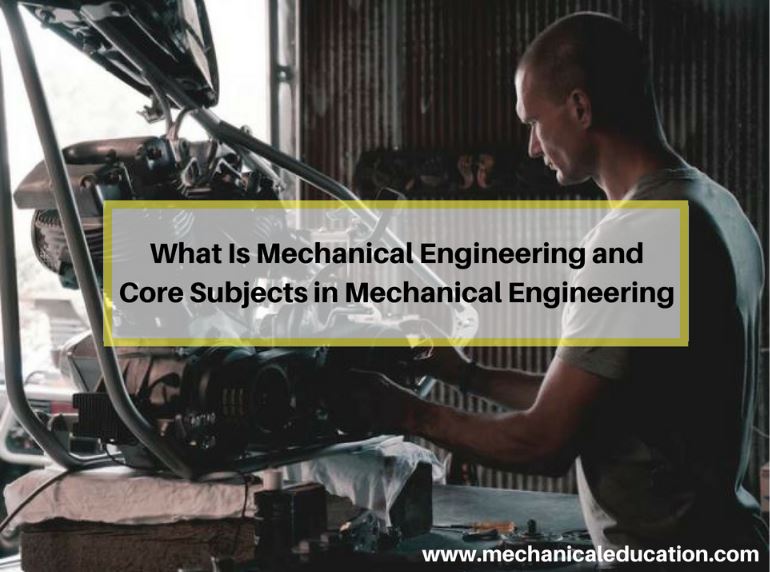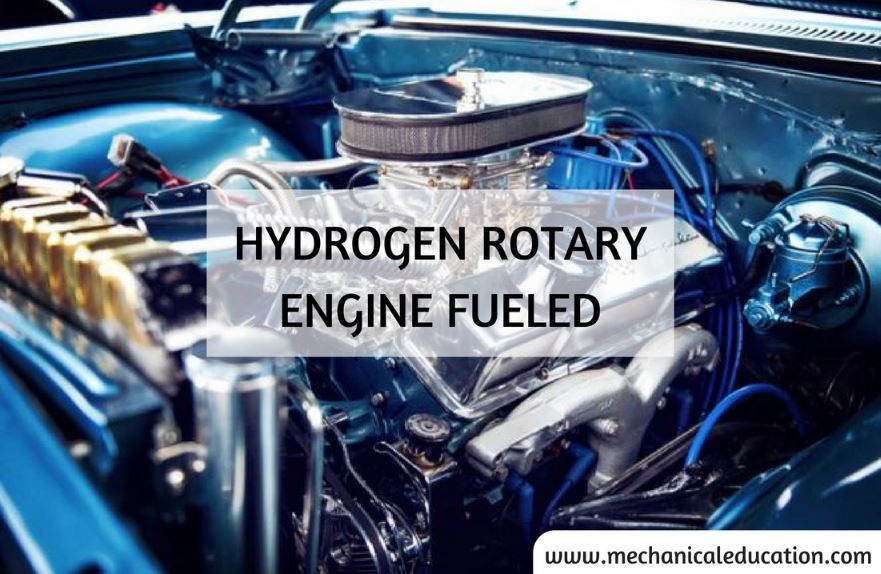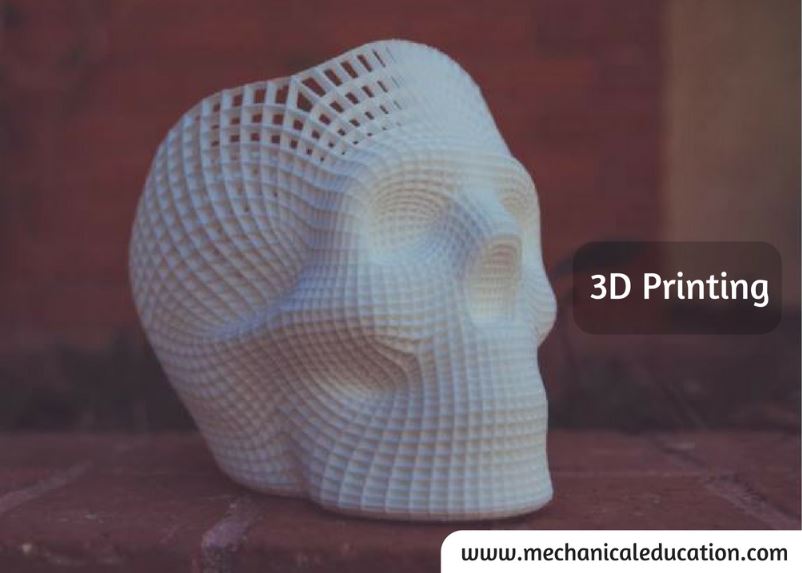A centrifugal compressor is a type of dynamic compressor that utilizes centrifugal force to compress gas or air. It consists of a rotating impeller with several blades, enclosed in a casing or housing.
When the impeller rotates, it draws in gas or air through the inlet and accelerates it outward towards the edges of the impeller blades. As the gas or air moves outward, it gains kinetic energy and velocity, resulting in an increase in pressure due to the centrifugal force. This compressed gas or air is then discharged through a diffuser, which converts the high-velocity, low-pressure gas or air into high-pressure, low-velocity flow.
Centrifugal compressors are commonly used in various industries, including oil and gas, chemical, and manufacturing, for applications such as gas boosting, refrigeration, air conditioning, and pneumatic conveying. They are typically used for lower pressure ratios and higher flow rates compared to other types of compressors, such as reciprocating compressors and screw compressors.


How Do Centrifugal Compressors Work?
Centrifugal compressors work by using a spinning impeller to accelerate gas or air and convert its kinetic energy into pressure energy. Here are the basic steps of how a centrifugal compressor works:
- Inlet: The process gas enters the compressor through the inlet and into the eye of the impeller.
- Impeller: The impeller is a rotating wheel with curved blades that are designed to accelerate the gas as it passes through the impeller. As the impeller spins, the gas is pulled toward the center and then thrown outward by the curved blades.
- Diffuser: After leaving the impeller, the high-speed gas enters the diffuser, which is a stationary component that converts the kinetic energy of the gas into pressure energy. The diffuser is designed to gradually increase the area that the gas occupies, which slows down the gas and increases its pressure.
- Discharge: Finally, the compressed gas exits the compressor through the discharge nozzle and is delivered to the downstream process.
The compressor typically consists of a casing, an impeller, a diffuser, bearings, and seals. The impeller is connected to a motor or a turbine that rotates it at high speeds, typically between 10,000 and 60,000 rotations per minute (RPM). The speed and design of the impeller and the diffuser determine the compressor’s performance characteristics, such as the pressure ratio, flow rate, and efficiency.
Centrifugal compressors are commonly used in applications where high volumes of gas need to be compressed to moderate to high pressures. They are used in industries such as oil and gas, chemical processing, and refrigeration, among others.


What is the principle of centrifugal compressor?
The principle of a centrifugal compressor is based on the transfer of kinetic energy to the gas or air by means of a rotating impeller. The impeller draws in the gas or air through the inlet and then accelerates it outward towards the edges of the impeller blades. As the gas or air moves outward, it gains kinetic energy and velocity, resulting in an increase in pressure due to the centrifugal force.
The centrifugal force is a result of the rotation of the impeller, which causes the gas or air to experience a force that is perpendicular to the axis of rotation. The centrifugal force acts on the gas or air particles, pushing them outward and causing them to move in a circular path.
As the gas or air moves outward, it enters a diffuser, which converts the high-velocity, low-pressure flow into a high-pressure, low-velocity flow. The diffuser is designed to gradually increase the cross-sectional area of the flow passage, which reduces the velocity of the gas or air and increases its pressure.
The compression process in a centrifugal compressor is continuous, which means that the gas or air is compressed in small increments as it passes through the impeller and diffuser. The pressure ratio of a centrifugal compressor is determined by the geometry of the impeller and diffuser, the speed of rotation, and the gas or air properties.
Overall, the principle of a centrifugal compressor involves the conversion of kinetic energy to pressure energy through the use of a rotating impeller and a diffuser.


What are the main components of a centrifugal compressor?
The main components of a centrifugal compressor include:
- Inlet: The inlet is the component that allows the process gas to enter the compressor. It is typically designed to minimize turbulence and reduce the velocity of the gas before it enters the impeller.
- Impeller: The impeller is a rotating component that accelerates the gas or air and converts its kinetic energy into pressure energy. It typically consists of several curved blades that are arranged radially around a central hub.
- Diffuser: The diffuser is a stationary component that converts the high-velocity, low-pressure flow exiting the impeller into a high-pressure, low-velocity flow. The diffuser is typically composed of stationary vanes that gradually increase the cross-sectional area of the flow passage.
- Casing: The casing or housing is the outermost component of the compressor and serves to contain the gas or air and direct it through the impeller and diffuser. It is typically designed to minimize leakage and reduce vibration.
- Bearings: The bearings support the rotating components of the compressor, such as the impeller and motor or turbine shaft. They help to minimize friction and ensure smooth operation.
- Seals: The seals prevent the gas or air from leaking out of the compressor at various locations, such as the inlet, discharge, and bearing housings. They are designed to withstand the high pressures and temperatures of the gas or air.
- Motor or turbine: The motor or turbine provides the rotational energy required to drive the impeller. The motor or turbine is typically connected to the impeller shaft by a coupling or other mechanical device.
Centrifugal compressors can also include additional components, such as intercoolers, aftercoolers, and lubrication systems, depending on the specific application and operating conditions.


What is a centrifugal compressor used for?
Centrifugal compressors are used in a variety of industrial applications where a high volume of gas or air needs to be compressed to a moderate to high pressure. Some common uses of centrifugal compressors include:
- Gas processing: Centrifugal compressors are used to compress natural gas for transportation through pipelines or processing in gas plants.
- Refining: Centrifugal compressors are used in oil refineries to compress gases such as hydrogen, nitrogen, and propylene.
- Petrochemicals: Centrifugal compressors are used in petrochemical plants to compress gases such as ethylene and propylene.
- Chemical processing: Centrifugal compressors are used in chemical processing plants to compress gases such as chlorine, ammonia, and hydrogen.
- Refrigeration and air conditioning: Centrifugal compressors are used in large-scale refrigeration and air conditioning systems to compress refrigerant gases.
- Power generation: Centrifugal compressors are used in gas turbine power plants to compress air for combustion in the gas turbine.
- Aerospace: Centrifugal compressors are used in aircraft engines to compress air for combustion and in environmental control systems for cabin air conditioning.
Centrifugal compressors offer several advantages over other types of compressors, including high efficiency, compact size, low maintenance, and reliable operation. However, they are typically more expensive than other types of compressors and require careful selection and sizing for optimal performance in a given application.
What is a Centrifugal Compressor?
A centrifugal compressor is a type of dynamic compressor that utilizes centrifugal force to compress gas or air. It consists of a rotating impeller with several blades, enclosed in a casing or housing.
When the impeller rotates, it draws in gas or air through the inlet and accelerates it outward towards the edges of the impeller blades. As the gas or air moves outward, it gains kinetic energy and velocity, resulting in an increase in pressure due to the centrifugal force. This compressed gas or air is then discharged through a diffuser, which converts the high-velocity, low-pressure gas or air into high-pressure, low-velocity flow.
Centrifugal compressors are commonly used in various industries, including oil and gas, chemical, and manufacturing, for applications such as gas boosting, refrigeration, air conditioning, and pneumatic conveying. They are typically used for lower pressure ratios and higher flow rates compared to other types of compressors, such as reciprocating compressors and screw compressors.


How Do Centrifugal Compressors Work?
Centrifugal compressors work by using a spinning impeller to accelerate gas or air and convert its kinetic energy into pressure energy. Here are the basic steps of how a centrifugal compressor works:
- Inlet: The process gas enters the compressor through the inlet and into the eye of the impeller.
- Impeller: The impeller is a rotating wheel with curved blades that are designed to accelerate the gas as it passes through the impeller. As the impeller spins, the gas is pulled toward the center and then thrown outward by the curved blades.
- Diffuser: After leaving the impeller, the high-speed gas enters the diffuser, which is a stationary component that converts the kinetic energy of the gas into pressure energy. The diffuser is designed to gradually increase the area that the gas occupies, which slows down the gas and increases its pressure.
- Discharge: Finally, the compressed gas exits the compressor through the discharge nozzle and is delivered to the downstream process.
The compressor typically consists of a casing, an impeller, a diffuser, bearings, and seals. The impeller is connected to a motor or a turbine that rotates it at high speeds, typically between 10,000 and 60,000 rotations per minute (RPM). The speed and design of the impeller and the diffuser determine the compressor’s performance characteristics, such as the pressure ratio, flow rate, and efficiency.
Centrifugal compressors are commonly used in applications where high volumes of gas need to be compressed to moderate to high pressures. They are used in industries such as oil and gas, chemical processing, and refrigeration, among others.


What is the principle of centrifugal compressor?
The principle of a centrifugal compressor is based on the transfer of kinetic energy to the gas or air by means of a rotating impeller. The impeller draws in the gas or air through the inlet and then accelerates it outward towards the edges of the impeller blades. As the gas or air moves outward, it gains kinetic energy and velocity, resulting in an increase in pressure due to the centrifugal force.
The centrifugal force is a result of the rotation of the impeller, which causes the gas or air to experience a force that is perpendicular to the axis of rotation. The centrifugal force acts on the gas or air particles, pushing them outward and causing them to move in a circular path.
As the gas or air moves outward, it enters a diffuser, which converts the high-velocity, low-pressure flow into a high-pressure, low-velocity flow. The diffuser is designed to gradually increase the cross-sectional area of the flow passage, which reduces the velocity of the gas or air and increases its pressure.
The compression process in a centrifugal compressor is continuous, which means that the gas or air is compressed in small increments as it passes through the impeller and diffuser. The pressure ratio of a centrifugal compressor is determined by the geometry of the impeller and diffuser, the speed of rotation, and the gas or air properties.
Overall, the principle of a centrifugal compressor involves the conversion of kinetic energy to pressure energy through the use of a rotating impeller and a diffuser.


What are the main components of a centrifugal compressor?
The main components of a centrifugal compressor include:
- Inlet: The inlet is the component that allows the process gas to enter the compressor. It is typically designed to minimize turbulence and reduce the velocity of the gas before it enters the impeller.
- Impeller: The impeller is a rotating component that accelerates the gas or air and converts its kinetic energy into pressure energy. It typically consists of several curved blades that are arranged radially around a central hub.
- Diffuser: The diffuser is a stationary component that converts the high-velocity, low-pressure flow exiting the impeller into a high-pressure, low-velocity flow. The diffuser is typically composed of stationary vanes that gradually increase the cross-sectional area of the flow passage.
- Casing: The casing or housing is the outermost component of the compressor and serves to contain the gas or air and direct it through the impeller and diffuser. It is typically designed to minimize leakage and reduce vibration.
- Bearings: The bearings support the rotating components of the compressor, such as the impeller and motor or turbine shaft. They help to minimize friction and ensure smooth operation.
- Seals: The seals prevent the gas or air from leaking out of the compressor at various locations, such as the inlet, discharge, and bearing housings. They are designed to withstand the high pressures and temperatures of the gas or air.
- Motor or turbine: The motor or turbine provides the rotational energy required to drive the impeller. The motor or turbine is typically connected to the impeller shaft by a coupling or other mechanical device.
Centrifugal compressors can also include additional components, such as intercoolers, aftercoolers, and lubrication systems, depending on the specific application and operating conditions.


What is a centrifugal compressor used for?
Centrifugal compressors are used in a variety of industrial applications where a high volume of gas or air needs to be compressed to a moderate to high pressure. Some common uses of centrifugal compressors include:
- Gas processing: Centrifugal compressors are used to compress natural gas for transportation through pipelines or processing in gas plants.
- Refining: Centrifugal compressors are used in oil refineries to compress gases such as hydrogen, nitrogen, and propylene.
- Petrochemicals: Centrifugal compressors are used in petrochemical plants to compress gases such as ethylene and propylene.
- Chemical processing: Centrifugal compressors are used in chemical processing plants to compress gases such as chlorine, ammonia, and hydrogen.
- Refrigeration and air conditioning: Centrifugal compressors are used in large-scale refrigeration and air conditioning systems to compress refrigerant gases.
- Power generation: Centrifugal compressors are used in gas turbine power plants to compress air for combustion in the gas turbine.
- Aerospace: Centrifugal compressors are used in aircraft engines to compress air for combustion and in environmental control systems for cabin air conditioning.
Centrifugal compressors offer several advantages over other types of compressors, including high efficiency, compact size, low maintenance, and reliable operation. However, they are typically more expensive than other types of compressors and require careful selection and sizing for optimal performance in a given application.


What is a centrifugal in air compressors?
A centrifugal air compressor is a type of air compressor that uses a rotating impeller to compress air. The impeller draws in air through the inlet and then accelerates it outward towards the edges of the impeller blades. As the air moves outward, it gains kinetic energy and velocity, resulting in an increase in pressure due to the centrifugal force.
The compressed air then enters a diffuser, which converts the high-velocity, low-pressure flow into a high-pressure, low-velocity flow. The diffuser is designed to gradually increase the cross-sectional area of the flow passage, which reduces the velocity of the air and increases its pressure.
Centrifugal air compressors are typically used in applications where a high volume of air needs to be compressed to a moderate to high pressure. They are commonly used in large-scale industrial applications, such as power generation, oil and gas processing, and chemical manufacturing.
One advantage of centrifugal air compressors is that they can operate at high speeds, which results in a high flow rate of compressed air. They are also relatively compact and have a simple design, which makes them easy to install and maintain. However, they are typically more expensive than other types of air compressors and require careful selection and sizing for optimal performance in a given application.


What are the two types of centrifugal compressors?
The two main types of centrifugal compressors are:
- Single-stage centrifugal compressors: Single-stage centrifugal compressors have a single impeller that is used to compress the gas or air. They are typically used in applications where a moderate to high pressure ratio is required, such as in gas turbine power plants, refrigeration systems, and process air applications.
- Multi-stage centrifugal compressors: Multi-stage centrifugal compressors have multiple impellers that are arranged in series, with each impeller stage increasing the pressure of the gas or air. They are typically used in applications where a high pressure ratio is required, such as in gas transmission pipelines, chemical processing, and petrochemical plants.
The selection of the appropriate type of centrifugal compressor depends on the specific application requirements, such as the required pressure ratio, flow rate, and gas or air properties. Both types of centrifugal compressors offer advantages and disadvantages, and the selection of the appropriate type requires careful consideration of these factors.


What is a centrifugal in air compressors?
A centrifugal air compressor is a type of air compressor that uses a rotating impeller to compress air. The impeller draws in air through the inlet and then accelerates it outward towards the edges of the impeller blades. As the air moves outward, it gains kinetic energy and velocity, resulting in an increase in pressure due to the centrifugal force.
The compressed air then enters a diffuser, which converts the high-velocity, low-pressure flow into a high-pressure, low-velocity flow. The diffuser is designed to gradually increase the cross-sectional area of the flow passage, which reduces the velocity of the air and increases its pressure.
Centrifugal air compressors are typically used in applications where a high volume of air needs to be compressed to a moderate to high pressure. They are commonly used in large-scale industrial applications, such as power generation, oil and gas processing, and chemical manufacturing.
One advantage of centrifugal air compressors is that they can operate at high speeds, which results in a high flow rate of compressed air. They are also relatively compact and have a simple design, which makes them easy to install and maintain. However, they are typically more expensive than other types of air compressors and require careful selection and sizing for optimal performance in a given application.


What is the major advantage of a centrifugal compressor?
One major advantage of a centrifugal compressor is its high efficiency. Centrifugal compressors are capable of delivering high volumes of compressed gas or air with relatively low power consumption. This is because they operate on the principle of kinetic energy transfer, where the rotating impeller converts the kinetic energy of the gas or air into potential energy in the form of increased pressure.
Another advantage of centrifugal compressors is their compact size and low maintenance requirements. They have a simple design and few moving parts, which reduces the risk of mechanical failure and the need for frequent maintenance. Additionally, centrifugal compressors are capable of operating at high speeds, which allows for a high flow rate of compressed gas or air.
Centrifugal compressors also offer good reliability and durability. They can operate continuously for long periods of time without experiencing significant wear and tear or performance degradation. This makes them suitable for use in critical industrial applications where reliable and consistent operation is required.
Overall, the high efficiency, compact size, low maintenance requirements, and good reliability make centrifugal compressors an attractive choice for many industrial applications.


What is the ratio of centrifugal compressor?
The ratio of a centrifugal compressor is the ratio of the discharge pressure of the compressed gas or air to the suction pressure of the gas or air. It is commonly referred to as the pressure ratio and is a key performance parameter of a centrifugal compressor.
The pressure ratio of a centrifugal compressor depends on several factors, including the design of the impeller, the rotational speed of the impeller, and the properties of the gas or air being compressed. In general, the pressure ratio of a centrifugal compressor increases with the number of impeller stages and the rotational speed of the impeller.
The pressure ratio of a centrifugal compressor can range from less than 1 to over 10, depending on the specific application requirements. For example, in a gas turbine power plant, a centrifugal compressor may have a pressure ratio of 10 or more, while in a refrigeration system, the pressure ratio may be closer to 2 or 3.
The pressure ratio of a centrifugal compressor is an important factor in determining the power consumption, efficiency, and overall performance of the compressor. Higher pressure ratios typically require more power and may result in lower efficiency, while lower pressure ratios may result in lower flow rates and reduced performance.


Advantages of centrifugal compressor?
There are several advantages of using a centrifugal compressor, including:
- High efficiency: Centrifugal compressors can deliver high volumes of compressed gas or air with relatively low power consumption. They are designed to operate on the principle of kinetic energy transfer, which results in high efficiency and reduced energy consumption.
- Compact size: Centrifugal compressors have a relatively small footprint compared to other types of compressors, making them ideal for installations where space is limited.
- Low maintenance requirements: Centrifugal compressors have a simple design with few moving parts, which makes them easy to install and maintain. They are also highly reliable and require minimal maintenance over their lifetime.
- High reliability: Centrifugal compressors are designed to operate continuously for long periods of time without experiencing significant wear and tear or performance degradation, making them highly reliable.
- Low noise levels: Centrifugal compressors operate at low noise levels compared to other types of compressors, making them suitable for use in environments where noise levels need to be minimized.
- Flexibility: Centrifugal compressors can be used for a wide range of applications and can handle a variety of gases and air flows. They are also capable of operating at high speeds, which allows for a high flow rate of compressed gas or air.
Overall, the high efficiency, compact size, low maintenance requirements, high reliability, low noise levels, and flexibility make centrifugal compressors an attractive choice for many industrial applications.


Disadvantages of centrifugal compressor?
While centrifugal compressors offer many advantages, there are also some potential disadvantages to consider:
- Limited compression ratio: Compared to other types of compressors, centrifugal compressors typically have a limited compression ratio. This means that they may not be suitable for applications where very high pressure ratios are required.
- Limited turndown capability: Centrifugal compressors have a limited turndown capability, which means that their flow rates may be limited at lower operating conditions. This can make them less suitable for applications with variable flow rates.
- Sensitive to impurities: Centrifugal compressors can be sensitive to impurities in the gas or air being compressed. This can cause damage to the compressor and reduce its efficiency.
- Higher initial cost: Centrifugal compressors can be more expensive to purchase and install compared to other types of compressors. However, their high efficiency and reliability can offset this cost over the long term.
- Require clean and dry air: Centrifugal compressors require clean and dry air to operate efficiently. This means that additional equipment may be required to ensure that the air is properly filtered and dried before entering the compressor.
Overall, the limitations of centrifugal compressors need to be carefully evaluated against the specific application requirements to determine whether they are the most suitable option. In many cases, the advantages of centrifugal compressors may outweigh the disadvantages, making them a preferred choice for industrial applications.


Uses of of centrifugal compressor?
Centrifugal compressors have a wide range of applications across various industries. Some of the common uses of centrifugal compressors include:
- Air conditioning and refrigeration: Centrifugal compressors are commonly used in air conditioning and refrigeration systems to compress and circulate refrigerant gases.
- Gas turbines: Centrifugal compressors are used in gas turbines to compress air before it is mixed with fuel and ignited to produce energy.
- Chemical and petrochemical processing: Centrifugal compressors are used in the chemical and petrochemical industries to compress gases and air for various processes, such as polymerization, separation, and transportation.
- Oil and gas processing: Centrifugal compressors are used in the oil and gas industry to compress gases for pipeline transportation, gas processing, and storage.
- Power generation: Centrifugal compressors are used in power plants to compress air for combustion in gas turbines and to compress refrigerant gases in cooling systems.
- Mining and construction: Centrifugal compressors are used in mining and construction industries to power pneumatic tools and equipment, such as jackhammers, drills, and sandblasters.
- Food and beverage processing: Centrifugal compressors are used in the food and beverage industry to compress air for packaging and processing applications, such as filling and sealing bottles and cans.
Overall, the versatility and efficiency of centrifugal compressors make them a preferred choice for many industrial applications where compressed gas or air is required.


What is the efficiency of compressor?
The efficiency of a compressor is the ratio of the actual work output to the energy input required to operate the compressor. It is often expressed as a percentage, with higher percentages indicating higher efficiency. The efficiency of a compressor depends on various factors, including the type of compressor, operating conditions, and design parameters.
For centrifugal compressors, the efficiency can range from 70% to 90% depending on the specific design and operating conditions. Reciprocating compressors can have efficiencies ranging from 70% to 85%, while screw compressors typically have efficiencies between 75% and 90%.
Efficiency can also be affected by factors such as the gas or air being compressed, inlet and outlet pressure, temperature, and the design of the compressor components such as the impeller, diffuser, and volute. Proper maintenance and operation of the compressor, including regular cleaning and monitoring of performance, can help to maintain or improve the efficiency over the lifetime of the compressor.


What is the flow range of centrifugal compressor?
The flow range of a centrifugal compressor can vary widely depending on the specific design and application requirements. Centrifugal compressors are capable of delivering a wide range of flow rates, from a few cubic feet per minute (CFM) to thousands of CFM or more.
The maximum flow rate of a centrifugal compressor is limited by factors such as the size and design of the compressor, the speed of the impeller, and the operating conditions. In general, larger compressors with higher speeds are capable of delivering higher flow rates.
The minimum flow rate of a centrifugal compressor is limited by factors such as the design of the compressor components and the operating conditions. In some cases, additional equipment such as variable inlet guide vanes or adjustable diffusers may be used to control the flow rate and improve the turndown capability of the compressor.
Overall, centrifugal compressors are well-suited for applications that require a wide range of flow rates and can be designed to meet specific flow and pressure requirements.
Frequently Asked Questions
1. What is a centrifugal compressor?
A centrifugal compressor is a type of dynamic compressor that converts kinetic energy into potential energy by accelerating air or gas radially outward in an impeller and then slowing the flow to increase pressure.
2. How does a centrifugal compressor differ from other types of compressors?
Unlike positive displacement compressors that trap and reduce the volume of air, centrifugal compressors operate on the principle of continuous flow, using high-speed impellers to increase the velocity of the air and subsequently convert it into pressure.
3. What are the key components of a centrifugal compressor?
The main components include an impeller, a diffuser or volute, and a casing. The impeller accelerates the air, the diffuser slows it down and converts kinetic energy into pressure, and the casing contains and directs the airflow.
4. Where are centrifugal compressors commonly used?
Centrifugal compressors find wide applications in various industries, including oil and gas, petrochemical, refrigeration, and air conditioning. They are often used in high-flow, low-pressure ratio applications.
5. What is the working principle of a centrifugal compressor?
The working principle involves the rotation of the impeller, which imparts kinetic energy to the incoming air. This high-speed air is then decelerated in the diffuser, causing an increase in pressure while maintaining a continuous flow.
6. What is the role of the impeller in a centrifugal compressor?
The impeller is a rotating component with curved blades. Its primary function is to accelerate the incoming air or gas to high velocities, creating a dynamic pressure increase.
7. How is the efficiency of a centrifugal compressor measured?
Efficiency is often measured by the isentropic efficiency, representing the ratio of the actual compression process efficiency to the isentropic ideal compression efficiency.
8. Can centrifugal compressors handle varying flow rates?
Centrifugal compressors are generally more suitable for applications with constant or varying flow rates compared to positive displacement compressors. They exhibit good turndown capabilities, especially in large-scale industrial processes.
9. What are some advantages of centrifugal compressors?
Advantages include their ability to handle large volumes of air, suitability for continuous flow processes, relatively simple maintenance, and fewer moving parts compared to some positive displacement compressors.
10. Are there limitations to using centrifugal compressors?
Centrifugal compressors may have limitations in high-pressure ratio applications and may not be as efficient as positive displacement compressors in certain conditions. Additionally, they require stable inlet conditions for optimal performance.




